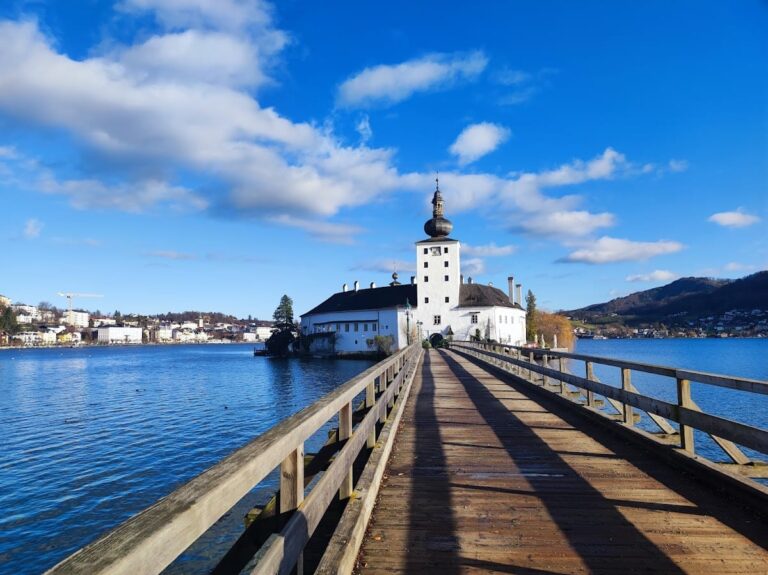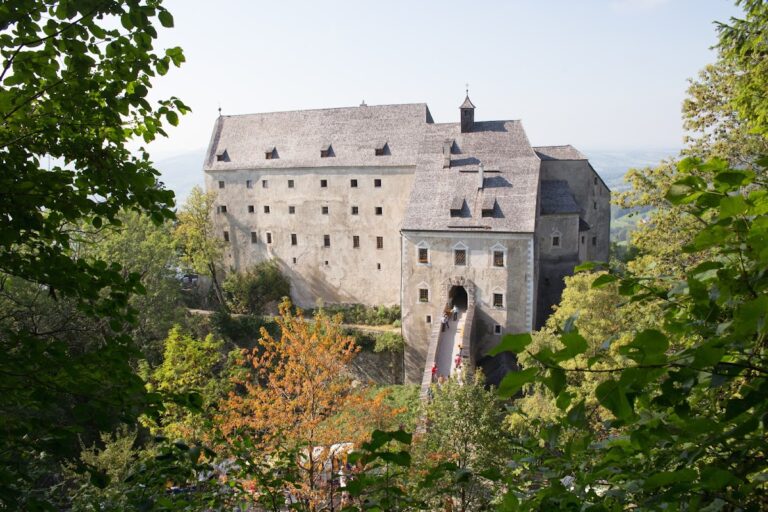Ruine Pflindsberg: A Medieval Castle Ruin in Austria
Visitor Information
Google Rating: 4.5
Popularity: Low
Google Maps: View on Google Maps
Country: Austria
Civilization: Medieval European
Remains: Military
History
Ruine Pflindsberg is a medieval castle ruin situated on a hill west of Altaussee in Austria. Constructed in the mid-13th century, it was built by the Archbishop-elect of Salzburg, Philipp of Spanheim, during a time of regional political shifts following the death of Duke Frederick II of Babenberg.
Around 1250, Philipp of Spanheim established the fortress to assert his authority over the Ausseerland and the Ennstal regions, which he occupied after Duke Frederick’s death in 1246. The castle’s strategic position enabled control over nearby salt mines at the Sandling massif and safeguarded trade routes traversing the Pötschenpass mountain pass. However, this assertion of power lasted only a few years. In 1254, Philipp withdrew in compliance with the Peace of Ofen, a treaty that ended his temporary occupation, and the site subsequently fell under the control of the Styrian duchy.
The first surviving written record of the castle appears in 1265, referred to as “Vlinsperch castrum.” Over time, Ruine Pflindsberg became the administrative center of an independent local domain, known as the seignory of Pflindsberg. This jurisdiction, separated from the neighboring Grauscharn-Pürgg, encompassed most of the Ausseerland region, governing roughly 90% of its properties. At the castle, officials administered the local lower court and managed the saltworks operations, known as the Hallamt, until these functions were shifted in 1395 to the nearby market town of Aussee.
During the period from 1460 to 1490, the seignory gained expanded judicial powers, including high court authority. Castle officers acted as judges, and the keep, called a bergfried, was repurposed as a prison. In the following century, the center of administration was moved fully to Aussee. By the late 16th century, the fortress had fallen into disrepair until Archduke Karl II commissioned renovations in 1574 and 1575. These works restored parts of the castle and added living quarters for a mining official who also functioned as a jailer.
In 1750, the castle and its seignory were integrated into the Salinenärar, the regional salt administration. The court functions relocated to Aussee, and by 1755 the castle had no permanent residents. Within a few decades, around 1780, the structure was completely abandoned and left in ruin. Interest in preserving the site began in the 20th century, with a local association dedicated to conservation efforts since 1972. Official protection as a cultural monument was granted in 2005.
Remains
Ruine Pflindsberg was designed primarily as a defensive fortress rather than a noble residence, occupying the summit of a wooded hill nearly 945 meters above sea level. Its layout was almost square, featuring a central keep known as a bergfried on the western side and a small gate tower on the eastern entrance. The castle’s position took advantage of steep natural slopes and rocky edges on three sides to enhance its defensive capabilities, while the fourth side was safeguarded by a protective ditch spanned by a bridge leading directly to the gate tower.
The bergfried originally had an unusual shape, an isosceles triangle approximately twelve meters long on each side, with walls about two meters thick. It was oriented so that one sharp corner faced toward the area from which attacks were most likely. During the restoration in the late 1500s, this pointed corner was cut off and reshaped by adding a short fourth wall segment, which altered the tower’s original triangular form.
Behind the bergfried ran the main residential buildings forming a courtyard. Two narrow buildings stood along the north and south sides, while the bergfried and gate tower enclosed this elongated space. Over the centuries, repairs generally preserved the original walls’ courses, except for the western side of the bergfried, which was modified during the 16th-century renovation. Today, only fragments remain of these structures: portions of the bergfried and the northern residential wing still stand, along with segments of the surrounding defensive wall. The southern building and the gate tower have left only faint traces.
North-east of the main ruin, remnants of additional walls possibly indicate an outer defensive work or outwork that once extended the fortress’s protection. On the hill’s eastern slope, a staircase cut directly into the rock descends from the castle down to a place known locally as the “Pflindsberger Krautgarten” at the base of the hill, suggesting a controlled access route. These remaining features provide a clear impression of Ruine Pflindsberg’s role as a fortified administrative center rooted in both defense and salt mining oversight.










